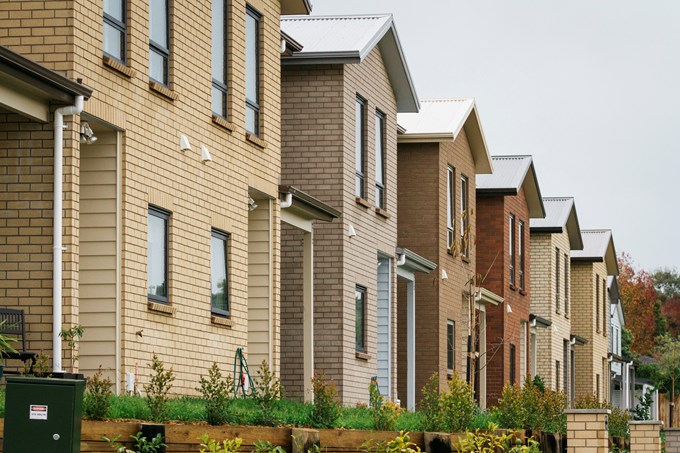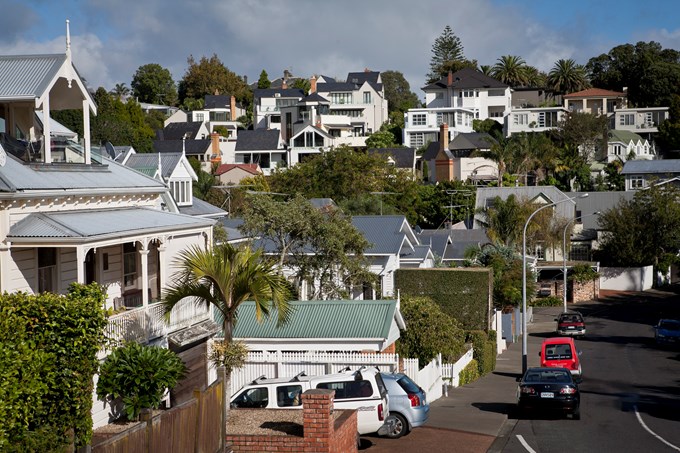Next to transport, housing is the biggest issue Auckland faces.
In the five years since its inception, Auckland Council has launched and carried out a number of initiatives to address Auckland’s housing challenges.
The council and the government have a Housing Accord which has accelerated delivery of housing across the city through Special Housing Areas (SHAs).
The range of housing choices in Auckland continues to increase with many more apartments and terraced housing being built, alongside standalone houses.
Auckland Council's own research report, The Housing We'd Choose, identifies that there is substantial and growing demand for these types of homes.
Unprecedented collaboration on housing
“Five years ago the government had to liaise with eight territorial authorities on the issue of housing,” says Deputy Mayor Penny Hulse.
“Today there is an unprecedented level of engagement and collaboration between the council, the development sector and government agencies, ensuring planning for the development of national, regional and local infrastructure is better aligned. Today Auckland speaks with one voice”.

The council now has Panuku Development Auckland, a new urban development agency which partners with others to address housing issues, especially fragmented land ownership.
Urgent need for more housing
“The Proposed Unitary Plan, the planning rulebook for Auckland, is currently being considered by the Independent Hearings Panel and a report is due back to the council in July 2016 for ratification and implementation,” says Penny Hulse.
“Once confirmed the Unitary Plan will bring positive changes and opportunities because it incorporates the need for and the importance of development and an increase in housing density.
“It caters for a city which urgently needs more infrastructure and more housing, a city that must continue to grow to ensure economic growth and prosperity.”
Social and affordable housing
Auckland Council is also actively implementing many initiatives to grow the supply of both social and affordable housing by working with the full spectrum of the community housing and commercial sectors.
“We are operating in a new way so Aucklanders can have a range of housing options, from emergency shelters and transitional housing to supportive housing for vulnerable populations, including seniors and people with mental illness, to public and non-profit affordable rental housing, market rental and home ownership,” says Penny Hulse.
“The SHA requirement is that developments provide either a minimum of 10 per cent affordable homes for sale or five per cent be retained over time as community housing.
“We have one SHA where the affordable housing percentage is 15 per cent. We are also very focused on working in partnership to develop affordable housing on council land that is no longer required. We have a number of developments underway with ‘shared equity’ housing being developed through a community housing provider. A suite of tools is required to address the affordability gap.”
Auckland Council has a strong commitment to emergency housing and that will continue as will its work on moving the emergency housing sector towards a more sustainable funding model.
Case studies - housing
Waimahia
Waimahia is an SHA on Auckland’s outskirts in Manurewa. It was the council’s first SHA with 100 new homes almost complete. Houses at Waimahia start at $314,000 for two bedrooms and up to $505,100 for five bedrooms.
Waimahia is on the waterfront of the Manukau Harbour and families now live in brand new homes, built on Crown land, consented by the council and provided by iwi and other community housing trusts – representing true collaboration.
The development’s key focus is to provide high-quality housing within an affordable price range. The support of the council’s Southern Initiative, the local board and the government has been important in reaching this point.
The development will ultimately yield around 280 new dwellings and sites and is scheduled for completion by 2017. It features a mix of housing types and includes 3.7 hectares of parks and reserves.

Tāmaki
Tāmaki Redevelopment Company (TRC) was established in 2012 by the Crown and Auckland Council to lead a programme of regeneration initiatives in the Tāmaki area including Glen Innes, Panmure and Point England.
These included planning physical and spatial development (including housing and infrastructure) and facilitating and coordinating the design and delivery of place-based social and economic programmes to lift prosperity and wellbeing.
The government owns 51 per cent of the company and the council, 49 per cent.
It will take possession of Housing New Zealand's 2800 state houses between West Tamaki Rd and the Panmure Basin early next year.
The government is also giving the company a $200 million loan facility to move more quickly on detailed planning, acquiring land, and starting to build more houses and related infrastructure.
As the facilitator of development, TRC is taking on large scale procurement to deliver 7500 new homes over the next 10-15 years.
Tāmaki Redevelopment Company plans to build 7500 new houses in the place of the 2800 existing ones over the next 10 to 15 years. More than half of the new houses will be sold and the remainder retained as social housing.

Hobsonville Point
The former Air Force land at Hobsonville Point is unrecognisable. Nearly 500 new homes have been built and more than 1200 residents are living there.
The number of homes sold is 847 and the number of Axis series (affordable) homes sold is 155.
Of the 24 hectares of reserves, 35 per cent is complete. A quarter of the 4kms of coastal walkway is complete.
People living in Hobsonville Point have 25 per cent cheaper house running costs, 28 per cent lower power usage and 30 per cent lower water usage.
All of the new homes are orientated to maximise solar gain from the sun and are insulated to a level above the building code including double glazing which makes them warm and less expensive to heat.
Each home includes a rainwater tank to supply the water used in toilets, laundry and garden and has water efficient showers, toilets and taps installed throughout.
Hobsonville Point also has two new schools and an early learning centre. As well as the very popular Catalina Café, the Brickworks apartments nave a new café, dairy, pharmacy, medical centre and an ATM with more eateries opening soon.



